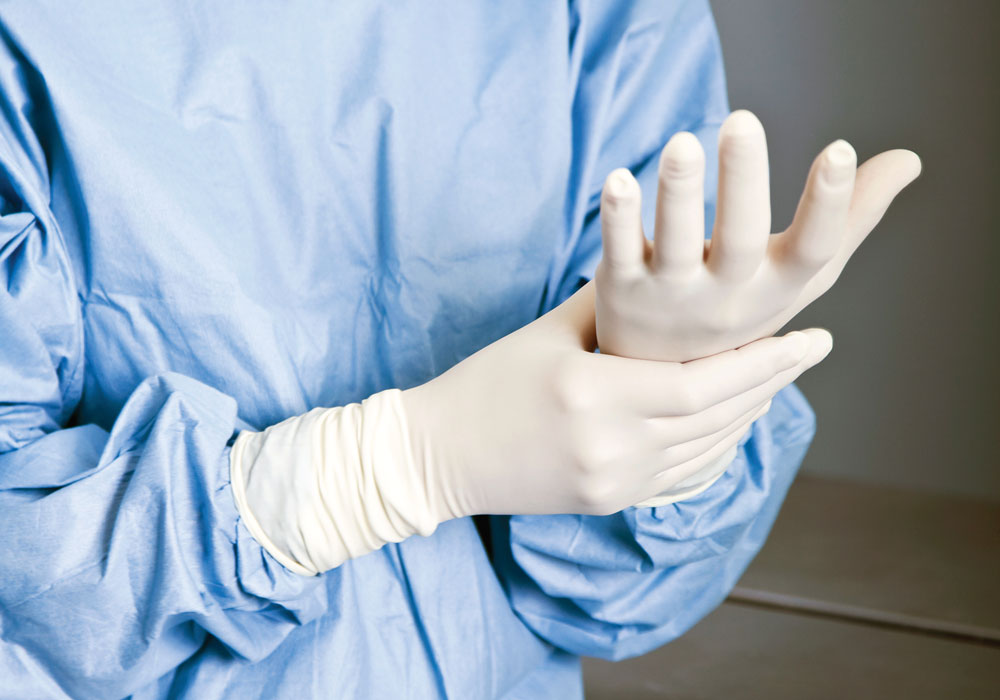A perhaps unexpected phenomenon the COVID-19 coronavirus pandemic created around the world was countless supply shortages. Most at worst were inconvenient (e.g., yeast shortages from pandemic breadmaking) or humorous (e.g., toilet paper memes), but one that oncology nurses experienced far too close to home was downright deadly: lack of proper personal protective equipment (PPE) supplies for handling hazardous drugs.
To immediately address the need and protect oncology nurses as best it could, in March 2020 ONS developed interim guidelines that nurses could use to maintain their highest level of safety with the supplies they had available. Is it time to retire the interim guidelines, which are intended as a temporary stopgap during shortages? Not just yet, according to the results of ONS’s most recent surveys
Hazardous Drug PPE Levels, According to ONS Members
ONS conducted two surveys among members in August 2020 (N = 120) and December 2020 (N = 100) to assess supply levels and use of PPE during the pandemic. Across most PPE products, availability decreased between August and December:
-
In August, about half of respondents said they were experiencing widespread or intermittent shortages of hazardous drug PPE, but by December, the number had grown to more than 70%.
-
Full access to chemo-tested gloves dropped from 64% in August to 55% in December.
-
Full access to hazardous drug gowns was equally low in both surveys, at 38% and 37%.
-
In both surveys, 73% of respondents said their institution “encouraged” or “required” reusing gowns. Nurses reported being more comfortable doing so on the December survey.
Access to both surgical and N95 masks increased between the two surveys, as did access to powered air purifying respirators (PAPRs) for hazardous drug spills.
Why Haven’t Supplies Returned?
Most of the respondents across both surveys cited supply chain issues as the reason for the shortages, but 10% said that their hazardous drug PPE had been routed to assist with COVID-19. Study findings have confirmed the ONS survey respondents’ suspicions: A sudden increase in demand overwhelmed the United States’ inadequate backup supplies, but the obvious solution—just order more—wasn’t that simple. Most PPE is manufactured in other countries, particularly southeast Asia and China, but because those areas experienced COVID-19 first, they had exhausted the supply for their own outbreaks. As the virus spread around the globe, other countries shut down their exports to preserve PPE supplies as well.
Although exports are rebounding, because of the fluctuating supply and demand as COVID-19 diagnoses spiked in winter 2020–2021, manufacturers are still struggling to keep up. Additionally, price gauging can make it difficult for facilities to find the funds to purchase enough supplies at once, creating disparities in economically challenged areas.
What You Can Do About It
Each institution should monitor PPE availability; once it has adequate supplies, immediately return to HD precautions consistent with nationally accepted safety standards from ONS and the National Institute for Occupational Safety and Health, Occupational Safety and Health Administration, and U.S. Pharmacopeia.
In the meantime, nurses should work closely with their pharmacy colleagues, purchasing team, and suppliers to identify available products that will best protect the staff and meet their needs. There may be a different brand or product available than what was used previously. Purchase gloves that have been shown to protect staff from the HDs used in your setting, and ensure that gowns open in the back and are made of polyethylene-coated polypropylene or other laminate material. Investigate which products are available and the rate at which they are being replenished.






